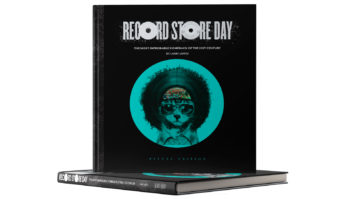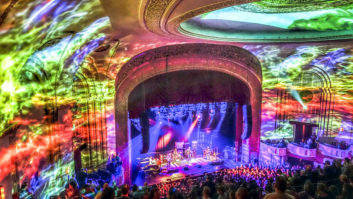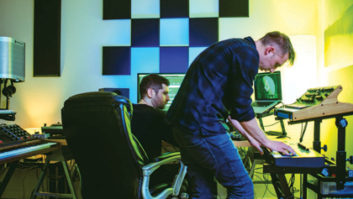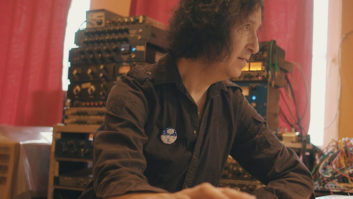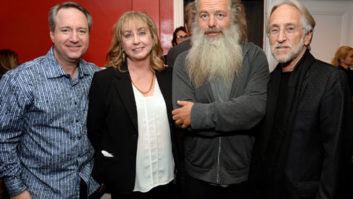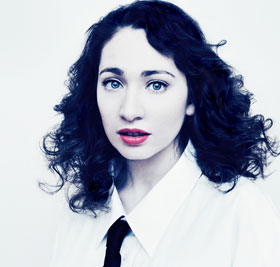
Photo: Shervin Lainez
It all starts with a grand piano, Regina Spektor’s acrobatic voice and the breathtaking songs that bloom from this classically trained artist’s fertile imagination—that’s a pretty amazing place to start. And then…enter the human beatboxing, acoustic and electronic instruments and, somehow, musical breathing.
Spektor made her latest album, What We Saw from the Cheap Seats, with versatile musician/producer Mike Elizondo. Best known for collaborations with Dr. Dre and Eminem, Elizondo has worked with a broad range of musicians, from Alanis Morissette to Maroon 5 to Avenged Sevenfold. Elizondo and his go-to engineer, Adam Hawkins, also helped make a handful of the songs on Spektor’s previous studio release, Far, and Spektor came back for more.
“Even though everything starts with her piano and vocal, it was very clear that Regina didn’t want this record to feel like it was all centered around the piano,” Elizondo says. “There’s a lot of rhythmic interplay, and a lot of instruments that come in and out. We started with piano and voice, but then we’d start layering sounds.”
The project started with Spektor playing new compositions for Elizondo in his home studio. Once the pair had selected songs for the album, Hawkins recorded Spektor’s simultaneous piano-and-vocal performances to Pro Tools.
“Everything you see Regina do in a live performance—moving around, making vocal sounds—that’s what she does in the studio,” says Hawkins. “She’s very dynamic. She can be bashing on the piano while whispering. Or it will be the other way around: She’s wailing and barely touching the keys.”
For Spektor’s vocal chain, Hawkins used a vintage Telefunken 250 mic into a Neve 1073 mic pre, and then to a vintage blue-stripe UREI 1176 compressor. “The 250 has all the detail,” Hawkins says. “It’s a little warm and fuzzy; it’s really bright without being harsh, and it has some fullness. Because she’s so dynamic, we needed the 1176. I probably used it to more of an extreme than most engineers would, but it seemed right to let the 1176 work pretty hard.”
On piano, Hawkins used a pair of Wunder Audio CM12s “to capture the clean, bright dynamics of everything,” and a pair of Coles 4038 ribbons. He placed one ribbon near the far end of the low strings and the other near the high end; the CM12s were a small distance apart, both near the hammers. All piano mics also went into Neve 1073s. “I also processed the Coles with a Chandler TG1 [compressor] and limited them pretty hard,” Hawkins says. “That adds a cool character if you tuck it in under the clean CM12 sound. It adds unrealistic width and depth to the image.”
Hawkins also helped Spektor create some unusual piano sounds. On the song “Oh Marcello,” for example, the piano is processed to sound something like an underwater harpsichord.

Producer Mike Elizondo (left) and engineer Adam Hawkins in Phantom Studios, in front of Phantom’s former SSL AWS 900 console, which now resides in Hawkins’ personal studio.
Photo: Brent Arrowood
“I used an old E-V radio mic that’s really distorted and midrange-y,” Hawkins recalls. “On the intro to that song, you can really hear that mic—that’s it, by itself—but it’s also blended in [with the other mics] in other parts [of the song]. We made that sound, where the piano is small and warbly, with that low-fi mic running through Sound Toys’ Echo Boy plug-in.”
Once the piano-vocal parts were laid down, Elizondo and Spektor began to flesh out the production. Some of the songs were recorded front-to-back in Elizondo’s studio; others were tracked in Can-Am Studios (Tarzana, Calif.).
“A lot of the time, the arrangements on these tracks were just a matter of following Regina’s lead about the sonic direction of the song: listening to how she’s playing the piano, what the lyric was,” Elizondo says. “Is it playful? Is it mysterious? I would figure out how she hears things, and then there was a lot of give and take with both of us throwing out ideas. Sometimes we’d have a very clear understanding of where the song was going; sometimes we’d start on a path and see where it led. It was quite a journey.”
One of the songs that went furthest beyond simple piano-and-voice is the first single, “All the Rowboats,” which includes electronic keys, electronic drum parts that Elizondo created in Logic, and two real kits as well.

“We started off with me grabbing some electronic beats and Regina playing piano with that,” Elizondo says. “It sounded like it somehow needed to have a lot of percussive interplay, so we brought in Jay Bellerose, who did some overdubs taking a really cool, orchestral-type approach. Then as we added more layers of keyboards and sounds and vocals, we felt it needed even more rhythmic layers, so Aaron Sterling came in and overdubbed another layer of drums. That one was definitely an experiment in terms of figuring out what we wanted to come across, and helping it unfold.”
During the mix—accomplished partly in Can-Am and partly in Hawkins’ private studio, and finalized in The Cutting Room (New York City)—Hawkins manipulated those drum parts to create definition: “I used lots and lots of automation—more than normal,” he says. “Up and down in certain sections, on certain kits, constantly riding one of the kits up and down to play in between the sounds of the other one, and then EQ’ing certain frequencies out of one with a GML plug-in so that another could fit in better.”
“The thing about that track is, the dynamics are all centered around Regina sonically,” Elizondo says. “She raises up in certain sections volume-wise, and then gets very quiet. It was a challenge and exciting for us to create this atmosphere that rose and dropped with the piano and vocals. You’re really on a roller coaster ride, sonically.”
